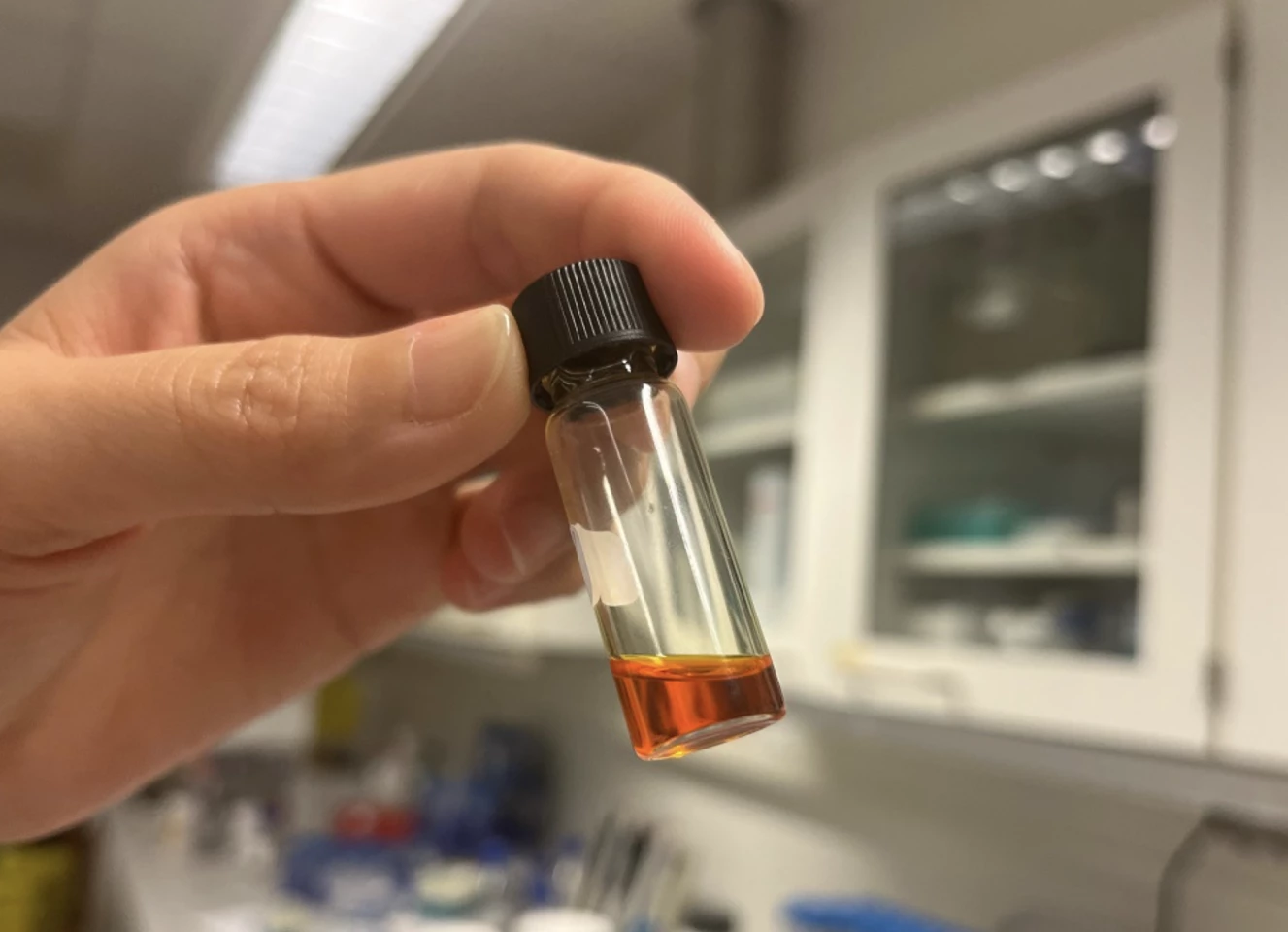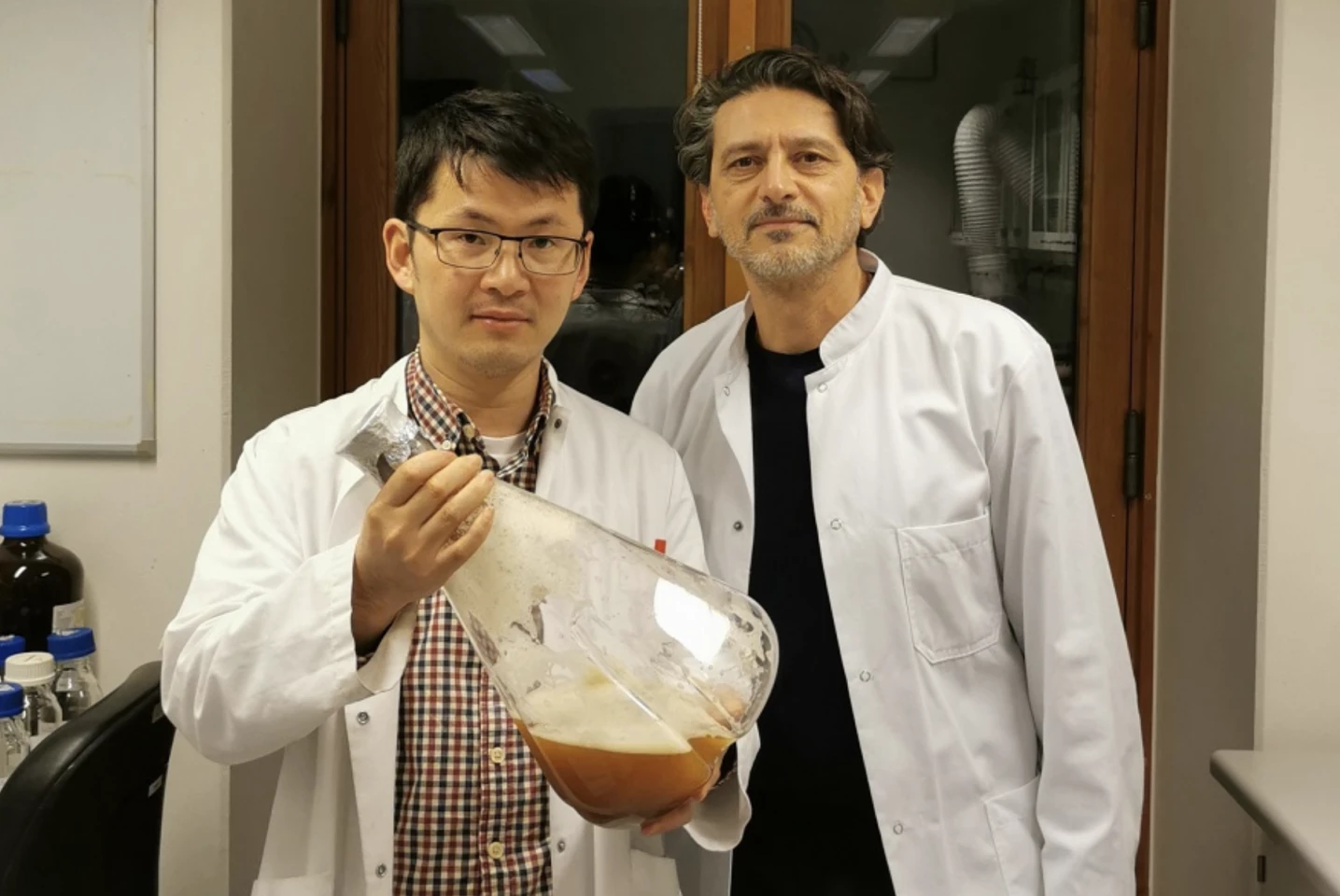A climbing vine known as the “Seven Steps of Death” holds within its toxic growth something scientists believe to be a powerful anti-obesity compound, celastrol. For the first time, this hotly touted compound has been produced simply and safely, using normal yeast as an ideal ‘surrogate' host.
The plant, better known as the thunder god vine (Tripterygium wilfordii), grows predominantly in China and has long been used in traditional medicine to treat rheumatoid arthritis, multiple sclerosis, Crohn’s disease, lupus, psoriasis, fever and more. But its toxicity to humans has made extracting its reportedly beneficial chemical properties time-consuming, risky and not at all scalable for further study and future commercial use.
Now, University of Copenhagen scientists have made the process of making celastrol simple and sustainable – the huge breakthrough needed to turn this promising compound into a viable, easily produced future obesity treatment.
"For obvious reasons, a person cannot just eat the plant and benefit from the drug,” said Sotirios Kampranis, professor at the Department of Plant and Environmental Sciences. “So what do we do? The problem with extracting celastrol from the nature source is that it is very hard to separate it from the other toxic molecules that the plant is full of. So far, there has been no effective method to achieve this.”
Celastrol has been attracting the attention of researchers for some years, who have studied its ability to interact with the peptide hormone leptin. Leptin plays a key role in regulating energy input (calories), signaling to the brain when more food is required, or when the body is satisfied. However, in weight gain, a resistance to leptin builds, causing those signals to fail, dysregulating hunger and satiety, and resulting in further weight gain and resistance.
However, celastrol has shown great promise in reversing this process, reinstating leptin sensitivity and re-establishing those energy-limiting signals vital for long-term weight maintenance. A successful drug developed from celastrol could, for example, assist people long-term after they’d initially lost weight on GLP-1 agonist medication, as this class of drugs does not yet prevent weight gain once treatment is discontinued.
In earlier experiments, mice on a high-fat diet and given celastrol had 45% less weight gain than the control cohort. A similar impact has been seen on human cells, though more research is needed – and part of the difficulty here has been access to the compound.
The researchers believed the answer was in biotechnology, to synthetically produce the extract with the key components taken from the original ‘recipe’ within the plant’s makeup. With that goal in mind, the team ultimately became the first to map the pathway featuring the 15 biochemical steps that the plant takes to make celastrol, a process that removed all the roadblocks that stood in the way of developing this compound further.
"We found out how the plant forms celastrol by finding all of the steps in the manufacturing process,” said lead researcher Yong Zhao. “This means that we could take the genes and enzymes that make the substance and put them into another organism that does not produce toxic substances. And that's what we've done with yeast.”
While modern pharmaceuticals are largely made through synthesis based on crude-oil-based petrochemicals, yeast is used widely throughout the biotechnology industry. It’s also a much better match for the plant's compound.
“Because the celastrol molecule is so complex, there are currently only very inefficient chemical synthesis methods which are not applicable for large-scale production,” said Zhao. “So our method is not only a green method – it is also the only real method that exists."
By using yeast as a host organism, the researchers were able to purely isolate and ‘grow’ synthetic celastrol in a tank quickly and with sustainable scalability.
"Imagine, you just need to feed the celastrol molecule table sugar, and by doing so, you get a compound that is almost in pure form without the toxic compounds that otherwise come with it in nature,” said Kampranis. “The process is simple and effective – it only takes around a week to get the final product. And it takes place without the toxic solvents or catalysts that are typically used in chemical syntheses.
"That is precisely why we have chosen to use yeast as an organism,” he added. “While academics develop the technology, it is important that it comes in a form that is useful for industry, where the technology can be further developed to make products that can help us all.”
Naturally, the next step of research is to see how this synthesized celastrol works in humans. They envisage it has the potential to be used independently or in conjunction with another therapeutic for long-term weight loss and maintenance. (Incidentally, the research was supported by the Novo Nordisk Foundation, which has Ozempic/Wegovy pharmaceutical bohemeth Novo Nordisk among its ranks.)
"One can imagine a treatment where celastrol is combined with other anti-obesity drugs to achieve a more robust effect,” said Zhao. “Because the more targets in the body that are hit, the better. Indeed, one often sees a synergistic effect when several agents are at play simultaneously. But here, of course, the pharmaceutical industry must take over.”
The study was published in the journal Nature Chemistry.
Source: University of Copenhagen









